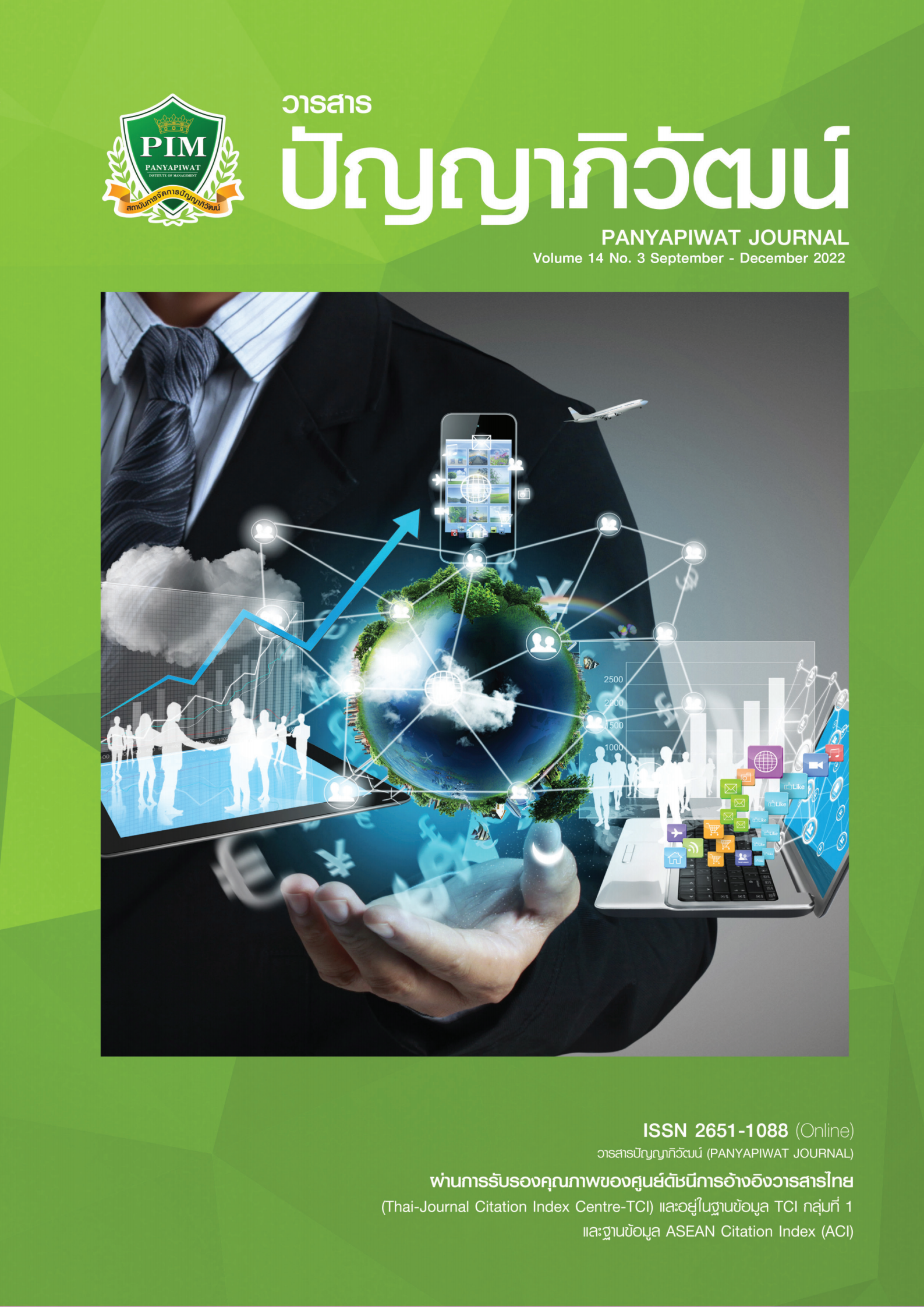THE DEVELOPMENT OF THE TRAINING COURSE MODEL THROUGH PROFESSIONAL LEARNING COMMUNITY TO PROMOTE ACTIVE LEARNING FOR EARLY CHILDHOOD TEACHERS
Main Article Content
Abstract
The purposes of this study were to develop a training course model and to investigate the results of using the training course model through Professional Learning Community (PLC) to promote active learning for early childhood teachers. The specific objectives were (1) to compare the abilities of active learning management through PLC before and after taking the training course and (2) to evaluate the satisfaction of early childhood teachers who took the training course through PLC to promote active learning. The research process was conducted in two phases: The first phase was the development of the training course model and the
second phase was the study of the results of using the developed training course model by application of the developed training course model with the target group, i.e. 12 purposively selected early childhood teachers in Tessaban 4 (Ban Chiang Rai) School under the Department
of Local Administration in Suan Dok Sub-district, Mueang District, Lampang Province. The research instruments comprised (1) the training course model, (2) an active learning management evaluation form, and (3) a satisfaction evaluation form. The data were analysis using the mean, standard deviation, and content analysis. The research results were as follows: (1) the developed training course model was composed of 4 main components (1.1) background of the model, (1.2) the process of the model, (1.3) the results of using the model, and (1.4) the reflection of using the model; (2) the results of using the training course model through Professional Learning Community (PLC) to promote active learning for early childhood teachers were as follows: (2.1) the result of comparison of abilities of active learning management through PLC of early childhood teachers showed that the post-training rating mean score was 4.36 which was higher than the pre-training counterpart mean score of 2.81; and (2.2) the overall satisfaction of the early childhood teachers’ who were trained with the training course model was at the high
level with the rating mean of 4.13; the specific aspect of satisfaction that received the top rating mean was the aspect of learning activities with the rating mean of 4.27, followed by the aspect of measurement and evaluation with the rating mean of 4.17; while the aspect receiving the lowest rating mean was that of the contents with the rating 3.97, also at the high level.
Article Details

This work is licensed under a Creative Commons Attribution-NonCommercial-NoDerivatives 4.0 International License.
I and co-author(s) certify that articles of this proposal had not yet been published and is not in the process of publication in journals or other published sources. I and co-author accept the rules of the manuscript consideration. Both agree that the editors have the right to consider and make recommendations to the appropriate source. With this rights offering articles that have been published to Panyapiwat Institute of Management. If there is a claim of copyright infringement on the part of the text or graphics that appear in the article. I and co-author(s) agree on sole responsibility.
References
Boston University. (2018). Active learning: Teaching guide. https://www.bu.edu/ctl/guides/active-learning/
Chaichawarat, R. (2015). Ways to build teachers to disciples: Professional learning community: Documentation of concepts and guidelines for professional development of teachers for the working group of the project to develop mechanisms and guidelines to support professional learning communities for learner development. Office of Social Promotion of Learning and Youth Quality. [in Thai]
Duangkamnoi, S. (2018). Proactive learning: Challenging activities for learners in the education age 4.0. Academic Journal and Research Northeastern University, 8(3), 61-71. [in Thai]
Kornpuang, A. (2019). Research and development of professional learning community management model of basic school teachers to promote STEM educational learning. The Golden Teak: Humanity and Social Science Journal (GTHJ.), 25(1), 26-40. [in Thai]
La Thunthirakun, N. (2018). Complete machine on PLC: Professional Learning Community. Khon Kaen Provincial Education Office. [in Thai]
New York University. (2018). Steps to creating an active learning environment. https://www.nyu.edu/faculty/teaching-and-learning-resources/strategies-for-teaching-with-tech/bestpractices-active-learning/steps-to-creating-an-active-learning-environment.html
Ngamsiri, D., Boonyot, N., & Pinijwajjanawong, N. (2020). Active-learning teaching by using the MARCO model in the cloud processing course. Journal of MCU Nan Review, 3(2), 69-80. [in Thai]
Office of Teacher Competency Development and Vocational Personnel. (2018). Guidelines for driving the community process of professional learning. Bureau of Personnel Competency Development. [in Thai]
Office of Teacher Development and Basic Education Personnel. (2017). Handbook for training on how to drive PLC (Professional Learning Community) process “professional learning community” to educational institutions. Teachers and Basic Education Personnel Development Bureau. [in Thai]
Online Learning Insights. (2017). Four-step strategy to create active learning in any learning space—online, F2F or blended. https://onlinelearninginsights.wordpress.com/2015/09/02/four-step-strategy-to-create-active-learning-in-any-learning-space-online-f2f-or-blended/
Pahe, S. (2013, December 28-29). Teacher professional development to the educational reform era in the 21st century. In S. Kaewpana (Chair), The teacher development according to the 21st century education reform strategy (B.E. 2552-2561) [Symposium]. Academic
Seminar System-wide Teacher Development According to the 21st Century Education Reform Strategy Phrae Primary Educational Service Area Office 1-2, Nakorn Phrae Tower, Phrae.
Ruangsuwan, Ch. (2010). Teaching technology: Design and development. Odean Store. [in Thai]
Srinon, R., Srinon, U., Yomdit. V., & KitnopkiatI, K. (2019). Active learning management in the era of Thailand 4.0. Journal of Education Administration, Silpakorn University, 9(2), 331-343. [in Thai]
Supakul, K. (2015). Active learning for real learners. Nakhon Sawan Rajabhat University. [in Thai]
Teacher Training Institute, Teacher Training. (2019). Drill in step by step!! PLC making process. https://www.learneducation.co.th/tag/plc/ [in Thai]
Thongon, Y. (2018). Active learning: Participatory teaching. Journal of Knowledge Management Nakhon Sawan Rajabhat University, 1(1), 1-8. [in Thai]
Tumchaiyangkul, O. (2020). An evaluation competency building mode form the preliminary executives of university: An application of professional learning community approach. Panyapiwat Journal, 12(1), 221-223. [in Thai]
Wiwanthamongkon, K. (2019). Model of developing teachers by using the process of Professional Learning Community (PLC) in promoting learning management abilities based on the STEM education approach at the basic education level. Veridian E-Journal, Silpakorn University: Humanities, Social Sciences, and Arts, 11(3), 91-114. [in Thai]


